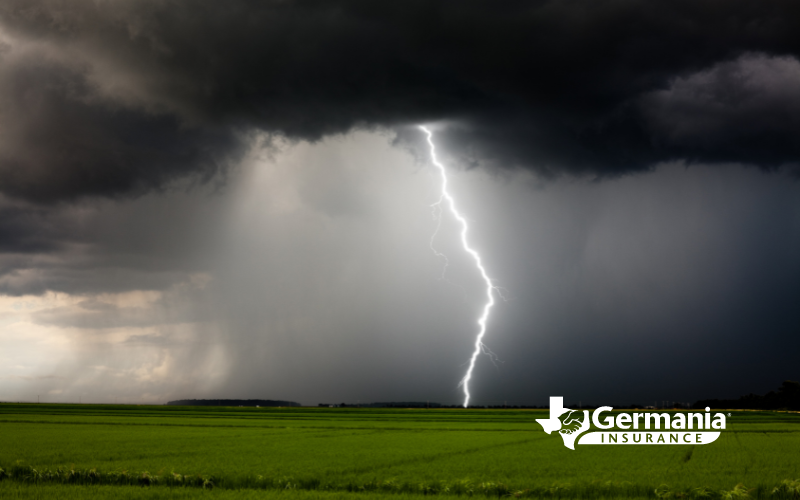Learn how to prepare and stay safe during the next Texas thunderstorm.

Thunderstorms, while often beautiful, can pose numerous threats. They are capable of producing dangerous lightning, powerful winds, and even tornadoes. As such, it's imperative to be prepared and know how to act before, during, and after a thunderstorm. This guide will equip you with practical strategies to stay safe during a severe thunderstorm.
Understanding Thunderstorms
A thunderstorm, also known as an electrical storm, is a storm characterized by lightning and its acoustic effect, thunder. Typically lasting 30 minutes on average, thunderstorms can develop rapidly, often without warning, making preparation key.
What Defines a Severe Thunderstorm?
A severe thunderstorm is not just any thunderstorm. According to the National Weather Service (NWS), a thunderstorm is classified as severe if it produces:
1. Hail greater than 1 inch in diameter.
2. Winds gusting over 57 miles per hour.
3. A tornado.
Understanding these criteria can help you better recognize when a thunderstorm has the potential to become severe.
Pre-Thunderstorm Measures
Before a thunderstorm even occurs, there are several ways you can fortify your home and make a plan to ensure your safety.
Preparing Your Home
One of the most effective ways to protect your home from a thunderstorm is to secure any loose objects and remove dead trees or branches that could potentially cause damage.
- Outdoor Objects: Secure outdoor items such as furniture, toys, and tools that could be blown away by strong winds.
- Trees and Branches: Dead or rotting trees and branches can be dangerous during a thunderstorm. If they fall, they could cause damage to your property or even injure someone.
Creating a Family Preparedness Plan
Having a well-thought-out plan can make all the difference during a severe thunderstorm.
- Safe Space: Identify a safe space in your home where your family can gather during a thunderstorm. This should ideally be a room with no windows or skylights, which could break due to strong winds or hail.
- Communication Plan: Establish a family communications plan. This will ensure that, in case family members are separated during a storm, you can keep in touch and stay updated about each other's situation.
- Emergency Kit: Assemble a disaster supply kit. Stock it with essentials like food, water, battery-powered radio, first aid supplies, and more.
Understanding Thunderstorm Alerts
Familiarize yourself with the difference between a severe thunderstorm watch and a severe thunderstorm warning.
- Severe Thunderstorm Watch: This means that a severe thunderstorm is possible. Stay tuned to a National Oceanic and Atmospheric Administration (NOAA) weather radio or TV for more information.
- Severe Thunderstorm Warning: This means that a severe thunderstorm is expected or occurring. Take shelter immediately.
During a Thunderstorm
If you find yourself in the midst of a thunderstorm, here are some crucial safety tips to follow.
Indoors
- Avoid Electrical Equipment: Avoid contact with electrical equipment such as televisions, computers, and appliances. Lightning can travel through electrical systems, potentially electrifying these devices.
- Stay Away from Windows and Doors: Keep a safe distance from windows and doors as they can be broken by strong winds or hail, causing injury.
- Avoid Plumbing: Refrain from taking a shower, washing dishes, or doing anything that requires you to be in contact with plumbing. Lightning can travel through metal pipes.
Outdoors
If you happen to be outside when a thunderstorm hits, you should:
- Seek Shelter: Try to take shelter in a nearby building or car. If no shelter is available, find an open space in a low-lying area.
- Avoid Trees: Steer clear of tall, isolated trees which can attract lightning.
Post-Thunderstorm Safety Measures
After the thunderstorm has passed, there are several things you should do to ensure your continued safety.
- Stay Informed: Continue listening to a NOAA weather radio or TV for updated information.
- Inspect Your Home: Check your home for potential damage, such as damaged walls, roof, and electrical system.
- Stay Away from Flooded Roadways: Do not attempt to drive or walk through flooded areas. It's impossible to know the depth of the water or the condition of the ground underneath.
While thunderstorms can indeed be dangerous, being informed and prepared can significantly reduce the risks. By understanding what a thunderstorm entails and how to prepare for and react to one, you can ensure the safety of you and your loved ones. Remember, the key to weathering any storm is preparedness.
Stay safe, stay prepared, and remember - when thunder roars, go indoors!

Have a question about insurance? Find an independent agent here!